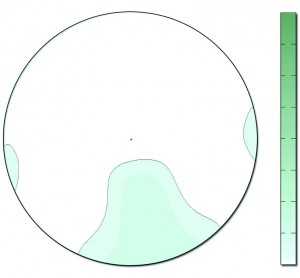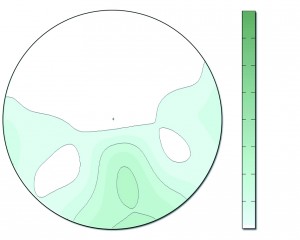Anti-Fatigue Lenses
July 27th, 2015 by Bill HeffnerMost of the talk about digital free-form lenses focuses on progressives. While this is good for those that need them, it doesn’t really help the vast majority of people under 30 years old. Traditionally, single vision lenses have been our go-to lens for this age group. However, we haven’t really stopped to consider whether or not this is still the best choice, given the average visual needs of today’s younger generations. As the use of phones, tablets, and computers increases, visual fatigue is becoming more and more prominent among younger people. These are the people that spend more and more time on electronic devices – computers, phones, tablets, and a plethora of other technological marvels. This also means that the daily visual tasks of these people are much different than previous generations. They spend more and more time with the vision focused within just two or three feet of their eyes. While they don’t usually complain about problems focusing, they do often have a number of other, subtler issues that many not be as easily linked to their vision. The Vision Council has also recognized the dangers inherent in eye strain. This is where anti-fatigue lenses come in.
Eye Fatigue
Symptoms such as head, back, and neck aches or tiredness can result from the extra effort that eye muscles make throughout the day. These types of visual problems can be even more pronounced in students. They tend to spend most of their day switching back and forth between focuses. First they have to look up at their instructor, then back to their notes, repeating that over and over on a daily basis. Even in young professionals, we have these issues. Especially as they spend 8 or more hours a day staring at a computer. Their eyes are continually focused to within just a few feet for hours on end. This is why we have lenses designed to address these problems. We refer to them as anti-fatigue single vision lenses. They are essentially a single vision lens, but they have a very small – less than a diopter – bump in sphere power at the bottom of the lens. These aren’t progressives, as there’s no progression or intermediate, but they do have just a little bit of power to allow the eyes to not have to work as hard. Just because someone’s eye muscles still change focus easily doesn’t mean we have to overwork them.
Eagle Scholar S.V.
The Eagle Scholar is designed to meet the visual needs of students. They have some very unique visual needs that we don’t see anywhere else. They are usually sitting at a desk in some manner of lecture hall, with their main focus on the instructor at the front. They may be watching a person talk, or perhaps a powerpoint presentation, or some other manner of notes projected at the front of the hall. Then they spend the next hour (or two, or three) listening and taking notes (supposedly). So that means they are continually shifting their vision from the front of the lecture hall (which could be 30′ away) to their notes that are a foot away. Back and forth, constantly, for an hour or more. There’s also the myriad of ways that students take notes today. They could be writing in a notebook, using a laptop, a tablet, or even their phone. All or these are going to require varying amounts of eye effort to focus on what’s being written down. They might not notice at the time, but their eyes are doing a lot of work. This usually manifests itself as stated above – headaches, eye strain and tiredness. The extra half of a diopter in the Eagle Scholar S.V. lens is intended to make the continual focal changes easier for the eye to manage. The less work it has to do, the less tired the muscles get. This, in turn, reduced the feelings of eyes being tired.
Eagle Workplace S.V.
The other option we have is geared towards young professionals. Working in an office means a lot of near work. Since a traditional office/computer lens would be overkill for this situation, we have the Eagle Workplace S.V. to address their visual needs. Since they spend most of the day using a computer or reading reports, we have a slightly higher add power when compared to the Eagle Scholar S.V. This lens has a +0.75 ‘bump’ at the bottom of the lens to account for the increased amount of near work that is going on. While a student tends to switch quickly and often between distance and near, the office worker tends to be one or the other. The father viewing if they are in a meeting, or walking around, and the near while they are at their desk. While the needs are similar, they are not quite the same, hence the separation between the Scholar and Workplace lenses. The best part about these lenses is that they aren’t relegated to second-pair lenses, as the additional power at the bottom won’t interfere with normal wear. These can easily be the primary pair for a wearer. Alternatively, they can be even further enhanced by using either a blue-blocking lens such as BluTech lenses, or with a UV-blocking coating, such as our Independence® Tech. This will help cut down on the blue light that’s emitted from digital devices, which can also contribute to eye strain.
Last Updated by Bill Heffner at July 27th, 2015



